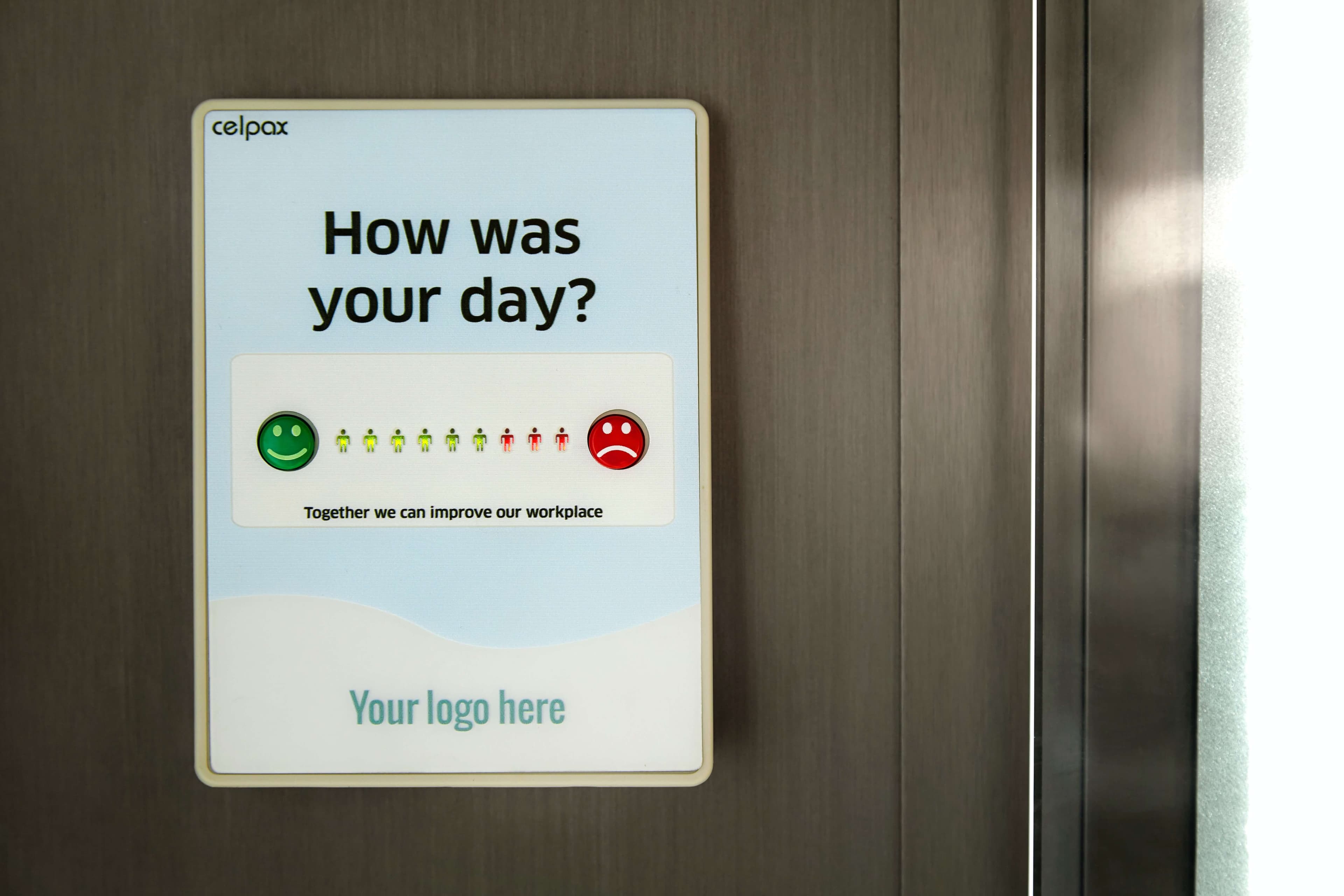Employee retention is a key aspect of any company's sustainability and success. Managers that proactively take steps to improve employee engagement are rewarded with happier, more productive employees and a vastly reduced turnover rate.
Of course, keeping a diverse team of employees highly motivated and working towards a common goal is easier said than done. Every employee has different needs depending on their journey within the company, and an effective employee engagement strategy should reflect this.
In this article, we're going to discuss the six key stages of the employee lifecycle, from attraction to separation. Understanding and adapting to these stages will help you to develop a cohesive, logical strategy for maximizing employee engagement across all levels of your team.
What is the Employee Life Cycle?
The employee life cycle model essentially categorizes the various stages that employees go through while working at a company. The aim of the employee lifecycle is to highlight the different strategies needed at each stage in order to maximize employee engagement.
For example, if you find that your new employees are slow to learn new processes or integrate with the team, you could work to identify any weaknesses in your onboarding stage and find the right strategies to address them.
The employee lifecycle begins from the moment that a potential employee hears about a position at your company. From the way that you attract this employee into a recruitment process, through to their development, retention, and eventual exit, their path will have certain similarities regardless of company size and type.
The Benefits of Implementing an Employee Lifecycle Workflow
Mapping out your employee lifecycle gives clarity to your employee engagement and retention strategies. You'll be able to better understand the unique requirements of employees at various stages of their journey and identify any pain points in your processes.
By providing a better overall employee experience, you can expect to minimize turnover and improve your employee retention. Why is this important? Well, according to Gallup, the cost of replacing an individual employee can range from one-half to two times the employee's annual salary. That's a huge potential loss of revenue, with the risks only increasing in a competitive and tight labor market.
As well as reducing costs, improving your employee retention brings better productivity through the nurturing of institutional knowledge. The longer you can keep teams together, the better their communication and collaboration become, leading to increased efficiency in daily tasks. This in turn provides a huge boost to company morale, as close professional relationships are allowed to flourish and employees realize the value of working together towards long-term goals.
Summary
Learning and addressing the unique needs and challenges of employees at each stage of their journey leads to happier, more productive teams.
Breaking down your employee journey into manageable stages helps to identify bottlenecks and weaknesses in your employee retention strategy.
Reducing employee turnover saves on an expensive hiring process while retaining your most experienced and motivated employees.
The 6 Employee Lifecycle Stages
Let's examine the typical employee lifecycle stages in more detail. While some aspects may vary according to company size and type, the following 6 examples cover the basic employee journey from attraction to separation.
1. Attraction
The employee lifecycle begins in your efforts to reach out and attract the best and most suitable talent for your company. No matter how well-developed your other stages are, they are meaningless if you're unable to attract the right employees in the first place.
But attraction goes far beyond simply posting job ads. The most attractive companies have built a positive reputation over time as a great place to work, with a strong company culture that's promoted by employees both current and past.
Building a thriving employer brand is a holistic exercise that takes place organically over time. Some things to consider include:
Invest in company culture: Your employees are your biggest brand ambassadors and will be only too happy to speak positively about your company if they enjoy working there. Developing a strong company culture encompasses things like communicating clear company values, promoting employee wellness and relationships, having meaningful goals and experiences, and creating a positive atmosphere in the workplace.
Promote your company brand: Become an active voice within your industry by attending seminars and contributing to respected publications. You can also use your social media accounts to promote your company culture, share professional and personal stories from your employees, and upload images of your team events.
Offer attractive perks: Aside from the obvious, which is competitive pay, you can offer creative and valuable perks to attract the best talent to your company. Things like healthcare services (gym memberships, massage, dental insurance, and so on) are always appreciated by employees, as well as basics such as work lunches and remote work possibilities.
2. Recruitment
Attracting talent is one thing, but recruiting the employees who will make the biggest long-term impact is another. This is your first meeting with a potential employee and your chance to share your company's values, mission, and expectations for the role offered.
It's important to be detailed and specific at this stage of the employee lifecycle - any false or vague information about the position offered can lead to disappointment and disillusionment later on as expectations are not met. While this might limit the number of candidates you might attract in the short term, you'll get a higher quality of employee who knows exactly what kind of company they are about to join.
Other things to consider during the recruitment stage include:
Make it a collaborative effort: New employees will often join an existing team, so it's a good idea to get your current employees involved in choosing their new members. This can include anything from asking them for referrals to interviewing as a team and making democratic decisions for the best candidates.
Cast your net far and wide: Are you looking in the right places for potential talent? With the normalization of remote work, some industries are now finding talent in locations that weren't accessible before. Consider where your ideal candidates are likely to be, whether it be on social media, industry websites, and magazines, or other channels, and advertise yourself there.
3. Onboarding
After you've sourced and recruited the best talent available, the next step is to integrate them with their new team and the overall values of your company. Onboarding helps new employees to settle into their new roles as quickly and efficiently as possible by introducing them to the knowledge and behaviors needed to thrive within your particular company structure.
First impressions count, so this is your chance to make employees feel welcome and ready for the exciting challenges that lie ahead. A thoughtful and detailed onboarding process helps employees to feel comfortable and engaged from the start of their journey and is a huge factor in the success or otherwise in boosting your retention rates.
Potential long-term employees at the onboarding stage will expect clarity into areas such as:
Company values and mission: Make these clear to each new employee and discuss ways to align them with their own personal values and goals.
Job description: Give new employees clear guidelines and knowledge with a detailed job description that they can access at any time. This provides a valuable learning resource as well as outlining your expectations for skills and behavior.
Ongoing support: Regular one-on-one meetings provide support and motivation for employees beyond the onboarding stage, and should begin here. Check-in with new employees soon after their initial onboarding to answer any questions, discuss any challenges with integration, and so on.
4. Development
The development stage is where your employees can flourish. This is your chance to engage employees with new knowledge and skills, helping them to grow within your company and plan their future career paths.
This is the most rewarding stage for those employees who are motivated to advance and improve. Not all employees will have this attitude, however, so keep this in mind. Certain employees are fine with their positions and responsibilities for the long-term and can respond negatively to forced development.
Assess each employee individually and consider the following points according to their needs:
Empower employees to spur their own development: Work on a personal development plan in your one-on-one meetings and let the employee take the lead on this. Provide your own ideas or guidelines only if the employee asks for them. Give honest and open feedback when assessing goals and results.
Nurture a culture of learning: Encourage learning by providing resources and motivation. Giving access to online courses, sending employees to conferences and seminars, and hosting regular training days are all great ways to promote development and engage employees with new knowledge. Reward employees that show an interest in developing their skills and ensure all of your learning opportunities are offered on company time.
5. Retention
Actively focusing on retention is also part of the employee lifecycle. In this stage, you make sure that your employees are motivated and happy, with a clear vision of their goals and future at the company.
Keeping your best employees happy and focused has a ripple effect across the whole company, as team members see that their career goals can be met in the long term. There's nothing more demotivating than seeing high achievers walking out of the door as soon as they get the opportunity to do so.
When analyzing your employee retention stage, take steps to ensure that the following aspects are in top shape:
Relationships: We're naturally social as human beings and thrive in small teams and communities. Build strong relationships between your team members that are centered around honesty and openness. Foster a sense of solidarity and mutual respect by leading by example and encouraging frank, positive exchanges that clarify the shared mission and goals of the team. Honesty builds respect - avoid sugar coating situations with half-truths and double-speak.
Feedback: This works both ways - you can keep employees up to date with their performance in your one-on-one meetings, and encourage them to share their expectations of you too. A good way to foster positive two-way communication is with a pulse survey. This short and relatively frequent (usually anonymous) questionnaire allows you to keep track of important retention metrics such as employee satisfaction, work environment, relationships, and much more.
Motivation: Get to know individual employees better and understand what motivates them to work at your company. Each person has different requirements when it comes to engagement and motivation, and it's up to you to learn how to meet their expectations in order to retain them as employees.
6. Separation
Finally, we reach the stage in the employee lifecycle where they make their exit from your company. This could be for a variety of reasons, but it is important to always treat your outgoing employees with the same respect and follow the same protocols.
People leaving a company does have an effect on the rest of the team, so have processes in place that minimize disruption and avoid placing any extra burden on them. Some things to consider include:
Focus on the positives: Thank outgoing employees for all of the great things they contributed to the company and wish them well. Remember, former employees contribute to your overall company culture too, so show understanding about their decision to leave and send them off with a great feeling about their experience.
Get feedback: You can't learn what you don't measure, so conduct an exit interview for honest and productive feedback about what it's like to work in a particular position. This gives you valuable insights that you can apply to those at the beginning of their employee lifecycle.
Reinforce team goals: Employee exits can hit team morale, so now is the time to take stock of team goals and give a renewed sense of clarity about the future. Losing team members can be sad, but it also gives others the opportunity to step up and advance.
Wrap Up
There's a lot to think about as each employee passes through their lifecycle, and these strategies only touch the surface of the various unique requirements that each stage entails. But by taking the time to understand the employee lifecycle in detail, you'll have a more highly-engaged team of employees who are much more likely to stick around for the long term.



